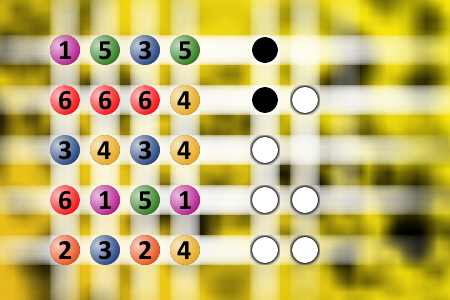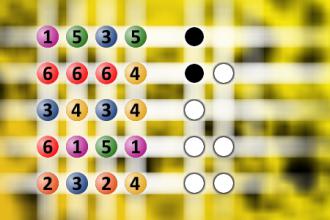What a winning combination?
The computer chose a secret code (sequence of 4 digits from 1 to 6). Your goal is to find that code. Black circles indicate the number of hits on the right spot. White circles indicate the number of hits on the wrong spot.Correct answers: 27
The first user who solved this task is Nasrin 24 T.
#brainteasers #mastermind

Two rednecks are walking down...
Two rednecks are walking down different ends of a street toward each other, and one is carrying a sack. When they meet, one says, "Hey Tommy Ray, what'cha got in th' bag?"
"Jus' some chickens."
"If I guesses how many they are, can I have one?"
"Shoot, ya guesses right and I'll give you both of them."
"OK. Umm... five?"
"Jus' some chickens."
"If I guesses how many they are, can I have one?"
"Shoot, ya guesses right and I'll give you both of them."
"OK. Umm... five?"

